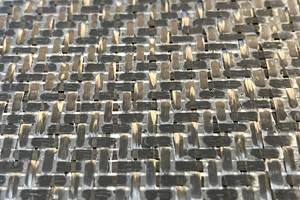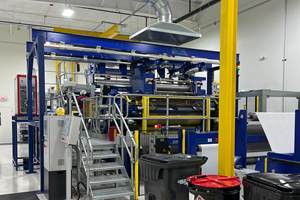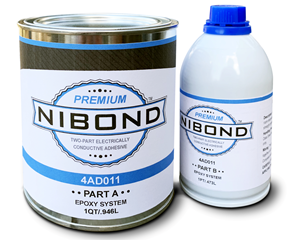Aerospace and automotive: Convergence on the horizon?
Guest columnist and composites industry consultant Dale Brosius reviews his own history with composites to support his contention that the once very different worlds of aerospace and automobile manufacture are not, as far as composites are concerned, so different anymore.
Most CT readers know that the American Composites Manufacturers Assn. (ACMA, Arlington, Va.) and the Society for the Advancement of Material and Process Engineering (SAMPE, Covina, Calif.) joined forces this past October to stage the CAMX conference and exhibition in Orlando, Fla. Historically, the SAMPE Convention & Exhibition was aerospace-dominated, while ACMA’s trade show and conference focused on marine, automotive, construction and other “industrial” markets. I ran into one longtime colleague who lives mainly in the world of compression molding of chopped fiberglass compounds, and he was overwhelmed by the scope of materials, processes and applications represented at CAMX. It was, he told me, “almost too much to absorb.” Those of us who have attended the JEC show in Paris for more than a decade have seen this melding of the extremes and the opportunities that flow from it.
Readers might not yet know that this is the final issue of Composites Technology before it is blended with sister publication High-Performance Composites to become CompositesWorld magazine — a merger that is further evidence the dividing lines have blurred.
In the late 1980s, I moved from the Dow Chemical Co. (Midland Mich.), where I pursued applications in automotive composites in Detroit, to a job in Salt Lake City, Utah, with Tempe, Ariz.-based Fiberite, where my work was focused mainly on composites applications in aerospace. One of Fiberite’s top executives welcomed me to the “high-tech” world (based on his perception that automotive manufacturing — i.e., banging and welding sheet metal — was “low-tech”).
At the time, airplanes were predominately metallic structures. Wing and stabilizer skins and other parts were made by subtractive manufacturing. That is, aircraft manufacturers took slabs of aluminum and milled 70 percent or more of the slab away to achieve the final part shape. A single aircraft took days or weeks to build, and a lot of guys with rivet guns put them together.
That didn’t seem very high-tech to me. I had been in auto assembly plants, watching robots do welding and apply adhesives. I saw components come together as each customer ordered them — the proper seats (leather or cloth, heated or not, powered or not), the right instrument panel with the specified audio components, matching carpet, and the right exterior color (a red one followed by a white one followed by a blue one, etc.). And did I mention that the auto guys were doing this at the rate of one every minute? That’s high-tech.
Fast forward. Today, Boeing’s 787 and the Airbus A350 XWB are 50 and 52 percent advanced composites by structural weight. Although many in the public press want to call these all-composite or “plastic” aircraft, they are still roughly 40 to 45 percent metallic, including aluminum, titanium and steel. New commercial aircraft designs are truly hybrid structures and are likely to stay that way to achieve maximum structural efficiency.
In a race against the clock to meet fuel efficiency and emissions targets, automakers are aggressively exploring lighter weight materials. A growing consensus among the experts is that the future of the automobile is in hybrid structures — a calculated mix of composites, steel and aluminum, exemplified by BMW’s i3 and i8, with their aluminum drive modules and carbon fiber passenger cells.
Hybrid structures require innovative joinery that accounts for thermal expansion and galvanic corrosion, yet enables disassembly and repair. This is an issue in both industries. We’re moving toward a time when aerospace and automotive technical advances will be interchangeable and will extend well beyond the use of carbon fiber. Composite design and simulation software developed for the aerospace industry will find application in automotive structures design — especially useful for predicting fatigue, failure modes and, eventually, crash performance, as OEMs adopt increasing levels of continuous reinforcement to save weight. And if efforts to accelerate aircraft certification via simulation are successful (see http://short.compositesworld.com/cdmHUB), they could result in dramatically shorter car design cycles as well.
For their part, aeromanufacturers are increasing their use of automation, especially for composite structures, and as the auto industry increases fabrication rates for carbon fiber composites, via fast-cure resins and rapid lamination, expect to see some of that technology adapted for aerocomposites.
There are a number of additional areas where we will witness convergence — more than can be enumerated in this space. Who knows, maybe we will someday see a composites-intensive car that can take to the skies, just like in the old Jetsons cartoons. Oh wait … a couple of companies — Terrafugia and Aeromobil — are already making this a reality today.
Related Content
Pontacol thermoplastic adhesive films are well-suited for composite preforms
Copolyester- and copolyamide-based adhesive films eliminate the need for sewing threads or binders when stacking laminates while improving the final part’s mechanical properties.
Read MorePark Aerospace launches aerospace, MRO structural film adhesive
Aeroadhere FAE-350-1 is a curing epoxy formulation designed for composite, metal, honeycomb and hybrid applications.
Read MoreHenkel receives Airbus qualification for European aerospace manufacturing facility
The adhesive company’s Montornès, Spain, plant has been approved as a standard and raw materials supplier for various Airbus platforms, adding to its work in lightweighting, fuel efficiency and automation.
Read MoreCAMX 2022 exhibit preview: Conductive Composites
Conductive Composites expands its portfolio of multifunctional electrically conductive composite materials with a new line of NiShield nonwovens and NiBond electrically conductive two-part structural epoxy adhesive.
Read MoreRead Next
CW’s 2024 Top Shops survey offers new approach to benchmarking
Respondents that complete the survey by April 30, 2024, have the chance to be recognized as an honoree.
Read MoreFrom the CW Archives: The tale of the thermoplastic cryotank
In 2006, guest columnist Bob Hartunian related the story of his efforts two decades prior, while at McDonnell Douglas, to develop a thermoplastic composite crytank for hydrogen storage. He learned a lot of lessons.
Read MoreComposites end markets: Energy (2024)
Composites are used widely in oil/gas, wind and other renewable energy applications. Despite market challenges, growth potential and innovation for composites continue.
Read More

















.jpg;maxWidth=300;quality=90)








